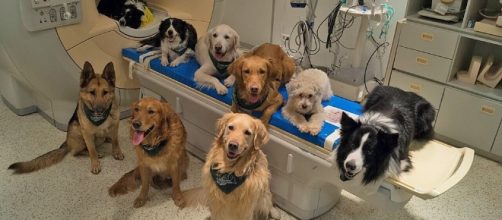A new study found that by scanning brains of dogs, scientists are able to identify with more certainty which of them are able to succeed in service training and which are not. Before using Fmri Scans, scientists were able to identify the best dogs with 47% certainty, while with the aid of fMRI scanning the chances became about 67 percent which is a significant success. Although this technique will not be feasible to everyone since it is very expensive, it could be used by large organizations that raise and train animals to serve disabled human beings.
The research was published in Scientific reports under the title ''Functional MRI in Awake Dogs Predicts Suitability for Assistance Work.''
Finding the fittest
As people always say, dogs are man's best friend, not just because of how loyal or friendly they are, but also how helpful they are to human beings, especially the disabled ones.
Scientists from Emory university have been studying a group of 43 dogs that are being trained to assist disabled people. The scientists use the functional magnetic resonance imaging or fMRI to scan the brains of these service dogs, looking for certain patterns that could give them hints about which dogs are suitable for the service and which aren't. the researchers claim that their analysis provided a significant enhancement in their ability to identify the best dogs.
They did not just identify the best, but they can also grasp the reasons.
The selection process
Before selecting any dogs to be service dogs, they must first be tested whether they are calm dogs, which are best for the job, or excited dogs, which are most likely not to be able to fill the position. Although the 43 dogs passed the first behavioral test, but some of them, when their brains were scanned, showed some high activity in a region in the brain called amygdala, which is a region associated with excitement in the body. The candidates that showed such signals were more likely to fail in the whole examination process.
This whole process of recruiting and testing and training is very expensive, and about 70% of the candidates fail to continue the whole course of training. The study which was performed will help lower the costs and save some time because it will give better chances in choosing the right dogs that will succeed in the end.

